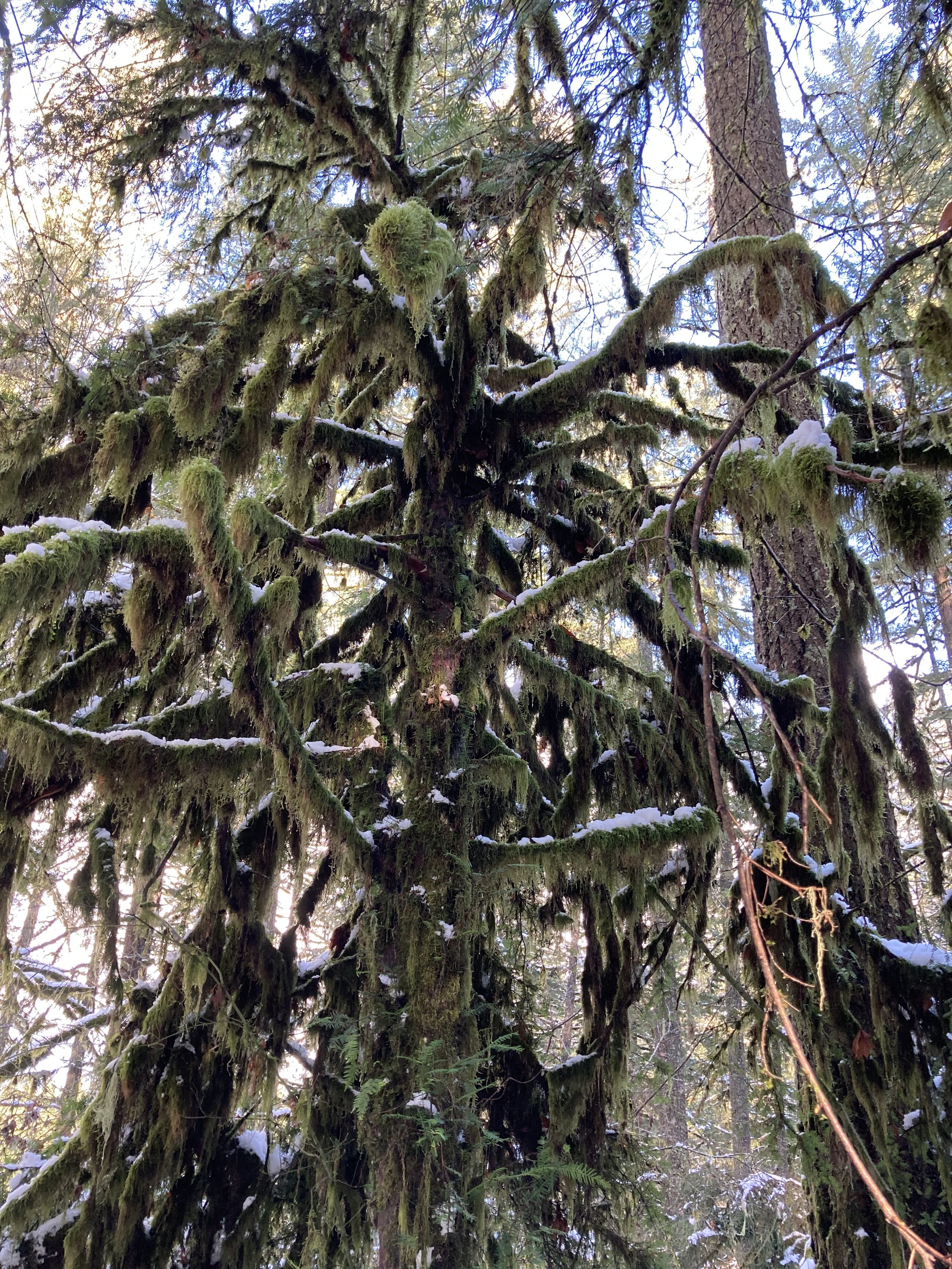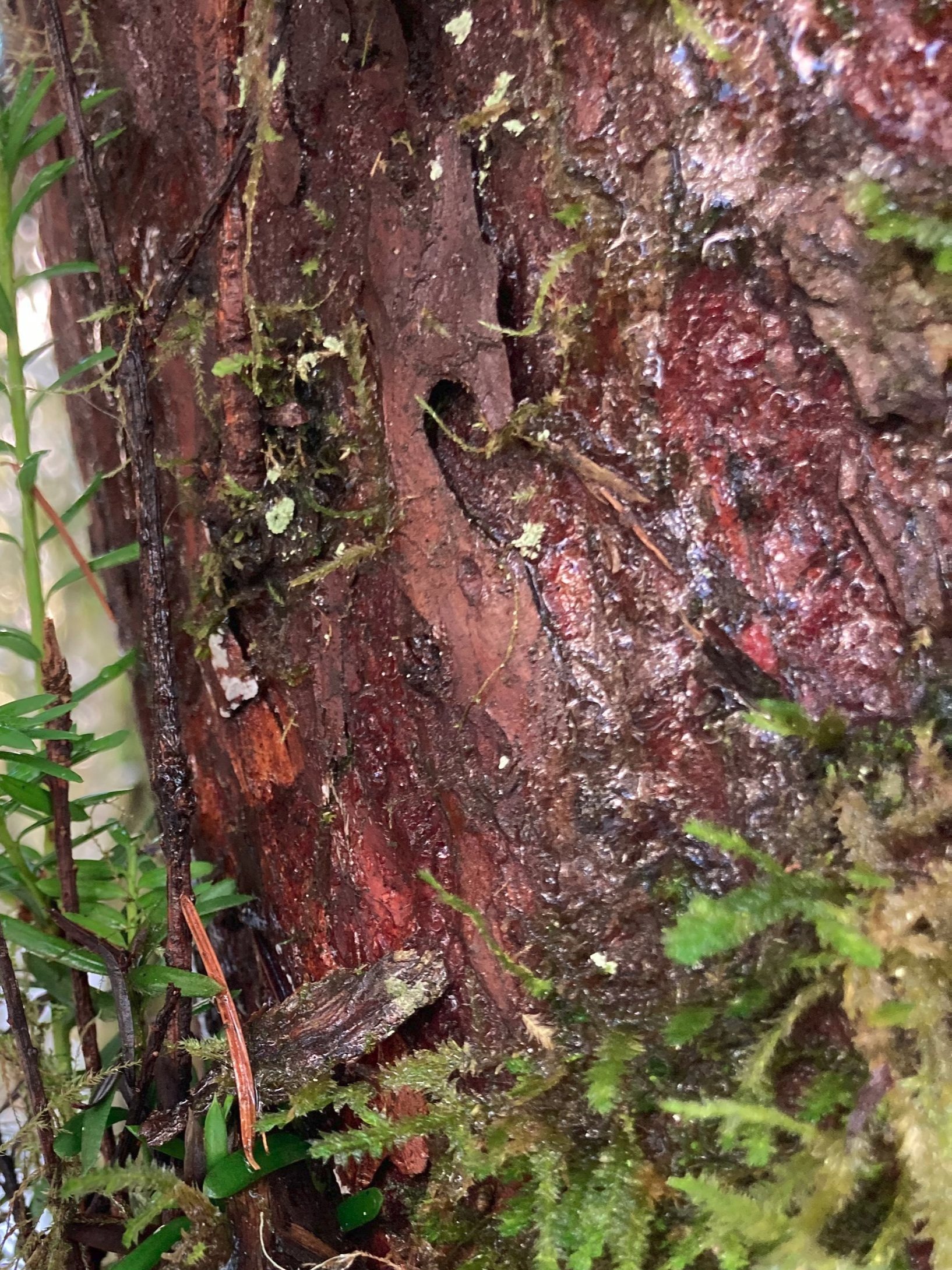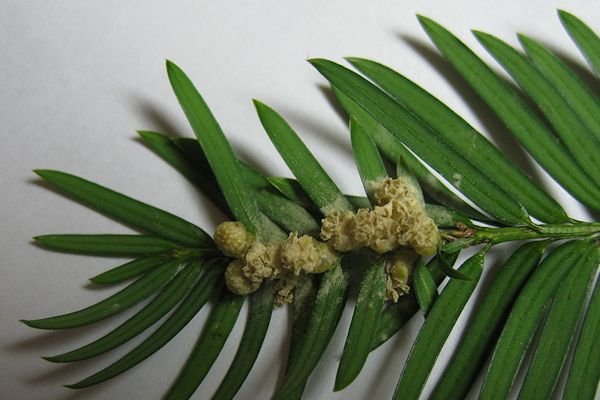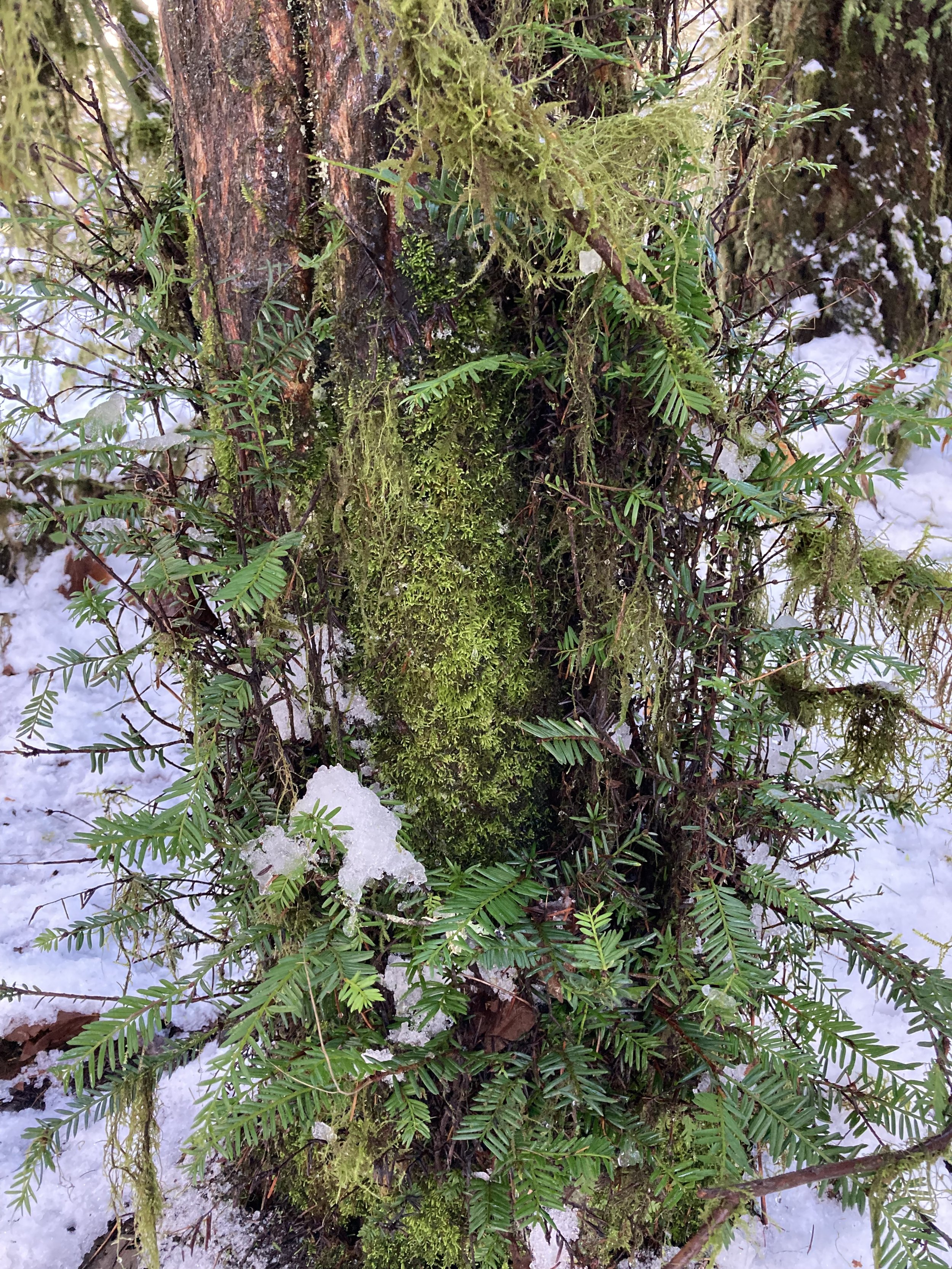by Kim Maley, Park Interpreter
Scraggly, moss-covered branches
In among the majestic Douglas-fir and Western Hemlock, the moss covered Big Leaf Maple, and the ever-present sword ferns, there lives a scruffy looking tree that is reminiscent of something you would find in a Dr Suess story. The shredded bark, the purplish trunk, and the sparse needles on scraggly, moss-covered branches all indicate you have just happened upon one of the best trees in the forest - The Pacific Yew (Taxus brevifolia)!
There are many interesting things about the Pacific Yew. Read on for four of my favorites:
yew don’t look so good
It’s true. Yew are not the most attractive tree in the forest. The shaggy bark and meager supply of needles give the inaccurate impression of a sickly tree.
Some identifying features of the Pacific Yew are:
Relatively short tree
Pacific Yew are a relatively short tree in comparison to other conifers, topping out at around 50ft. It is a shade-tolerant understory species that thrives in wet climates.
Needles
The needles are short. In fact, the latin name brevifolia means “short leaved”. The flat needles grow in opposite rows. Look at the underside of the needles to see the lighter shade of green than the darker topside.
bark
The messy look can be largely attributed to the shredded, purply-brown, paper like bark. In contrast with the thick bark of the fire-resistant Douglas-fir, the thin, papery bark of the Pacific Yew makes the tree particularly susceptible to heat damage. You are not likely to see these trees in areas prone to wildfires!
purplish trunk
Shredded, papery bark
seeds or cones?
Pacific Yew are dioecious, meaning there are male trees and female trees. Most trees have the full assortment of reproductive equipment and therefore serve both roles. Pacific yew are among those who either have seeds (female) or they have cones (male).
Seeds:
Photo credit: Jason Hollinger - Pacific Yew, CC BY 2.0, https://commons.wikimedia.org/w/index.php?curid=9693284
The bright red berries are a curious and unique feature to see on a conifer. Generally speaking, deciduous trees have fruit; conifers have cones. But as we all know, nature is full of exceptions, oddities, and anomalies. Exhibit A: the Pacific Yew!
The seeds produced are encased by a red, fleshy cup called arils. Arils look like berries but are actually a modified seed cone. Though they look invitingly tasty, don’t eat them as they are toxic to humans! Birds are unaffected by the toxins and are able to enjoy these tasty treats and disperse the seeds.
Pollen Cones:
Photo credit: Ken Denniston
Conifers have pollen cones and seed cones. As mentioned above, the Yew’s seed cones are cleverly disquised as berries. Pollen cones do not grow on the same trees as the seed cones, or arils. Pollen released from the pollen cones are dispersed by the wind to fertilize the seeds. Reproduction by seed undergoes the following cycle:
2. yew are special
Humans have had a varied opinion of the value of the Pacific Yew in terms of uses. On the one hand, the wood is not valued for firewood or timber but it’s strong yet flexible wood is ideal for making long bows, oars, furniture, fence posts, and tools. In fact, the wood is so hard and dense that yew wedges are used to split other wood!
On the other hand, the tree has a darker side. Every part from its bark to its needles is poisonous! Some darker uses capitalize on the Pacific Yew’s toxicity. In her book, Wicked Plants: The Weed that killed Lincoln’s Mother and Other Botanical Atrocities, author Amy Stewart writes of suicide and poisoning enemies by offering drinks from cups made of yew. It is this toxicity, however, that has both given the tree its bad reputation but also its most valued human use: medicine.
The chemicals behind the trees toxicity is taxine and taxane. Scientists have discovered that taxanes contain paclitaxel, and that paclitaxel disrupts mitosis when injected into an animal. Why is this important? Simply stated, paclitaxel is an antitumor agent in the fight against cancer!
And the harvesting began.
Not an uncommon story - in the excitement to develop a cure for cancer, the yew was in danger of extinction. Scientists, the medical community, and the environmentally conscious all pushed and pulled in their various goals until the partially synthetic Taxol was produced. Studies still continue but taxol has become an accepted and common chemotherapy treatment for breast and ovarian cancers and, because it is partially synthetic, the Yew as a source of this medicine are no longer threatened.
3. yew look stressed
A tree’s typical response to stress is to “cone out”, which means produce a bumper crop of cones as a way of ensuring the next generation will live on. So dramatic!
The Pacific Yew simply says, “I got this” and sends out new shoots.
4. where in the world are yew?
Yew Are Here
Taxus brevifolia enjoy cool, rainy, temperate forests. Silver Falls is in a cool, rainy, temperate rainforest! Not surprisingly, they are happily part of our conifer family here, as well as in the whole of the Pacific Northwest.
Pacific yews tend to lead a fairly solitary life. You are not likely to find significant stands of yew trees growing together. Rather, they prefer to quietly grow distant from other yews in the understory shade of the Doug-fir and Western Hemlock.
Sources and Additional Resources:
Abal M, Andreu JM, Barasoain I. Taxanes: microtubule and centrosome targets, and cell cycle dependent mechanisms of action, current cancer drug targets. 03 Jun 2003. [Internet] [accessed Jan 25 2017]. Available from: https://www.ncbi.nlm.nih.gov/pubmed/12769688
Bryan J. 2011. How bark from the Pacific yew tree improved the treatment of breast cancer. Pharmaceutical Journal. Sep 21 2011. [Internet] [accessed 2017 Jan 25]. Available from: http://www.pharmaceutical-journal.com/news-and-analysis/news/how-bark-from-the-pacific-yew-tree-improved-the-treatment-of-breast-cancer/11084729.article
Rao KV, Juchum J. 1995. A new large-scale process for taxol and related taxanes from Taxus brevifolia. Pharm. Research [Internet]. [cited Jan 23 2017]; 12(7). Available from: https://link.springer.com/article/10.1023%2FA%3A1016206314225
Somjaipeng S, Medina A, Magan N. 2016. Environmental stress and elicitors enhance taxol production by endophytic strains of Paraconiothyrium variabile and Epicoccum nigrum. ScienceDirect [internet] [cited Mar 3 2017]. Available from: http://www.sciencedirect.com.evergreen.idm.oclc.org/science/article/pii/S0141022916300746
Stewart A. 2009. Wicked Plants: The Weed that Killed Lincoln’s Mother and Other Botanical Atrocities. Chapel Hill (NC): Algonquin Books of Chapel Hill.
Sun Z-H, Yin S. 2015. Isolation and cytotoxicity evaluation of taxanes from the barks of Taxus wallichiana var. mairei. Bioorganic & Medicinal Chemistry Letters. ScienceDirect [Internet]. [cited Mar 6 2017]. Available from: http://www.sciencedirect.com.evergreen.idm.oclc.org/science/article/pii/S0960894X15000761
http://nwconifers.blogspot.com/2015/07/focus-on-pacific-yew.html
http://nwconifers.com/nwlo/yew.htm#
https://sites.evergreen.edu/plantchemeco/taxus-brevifolia/























